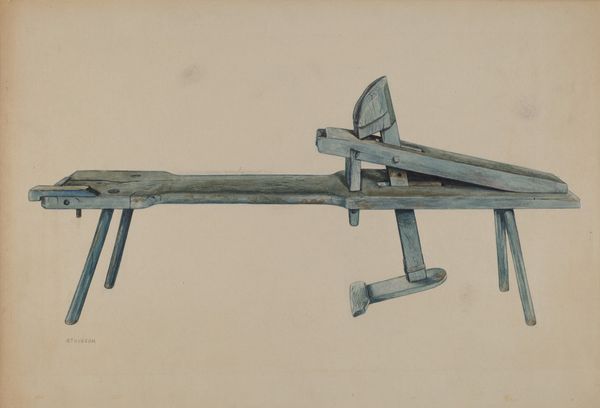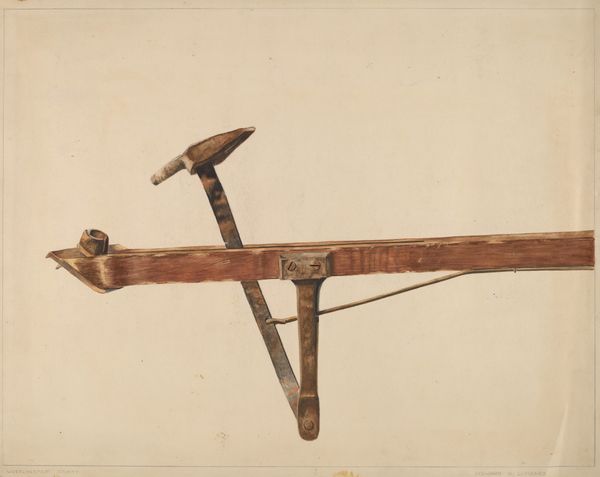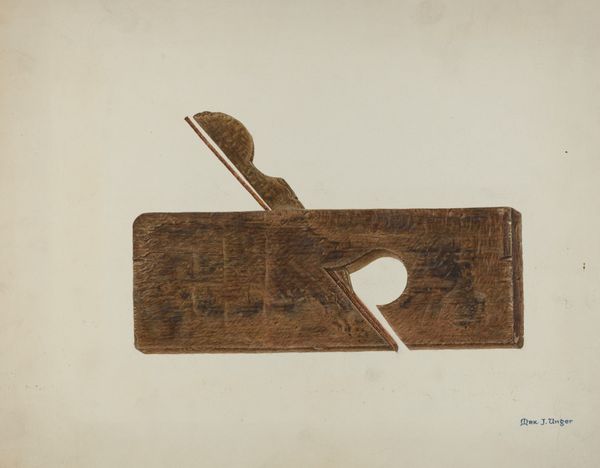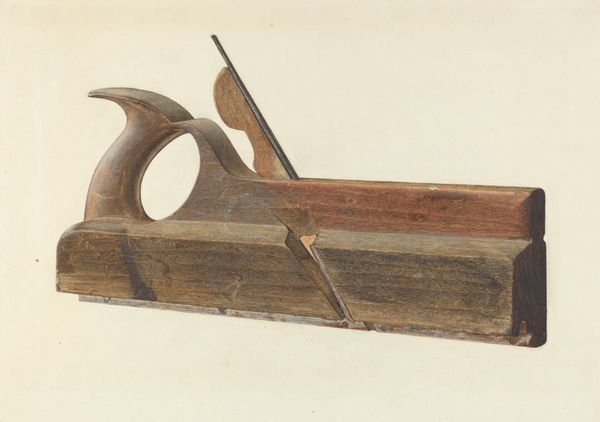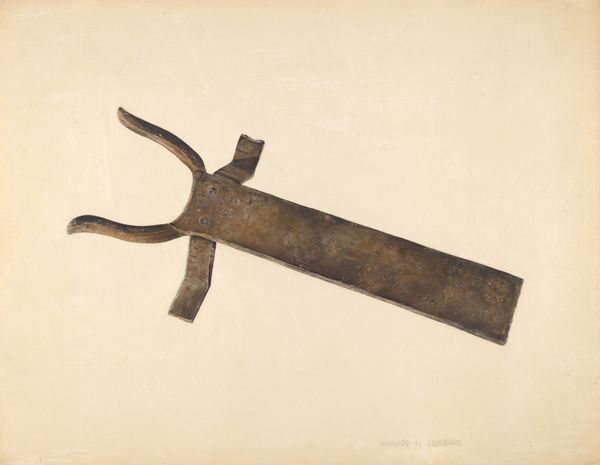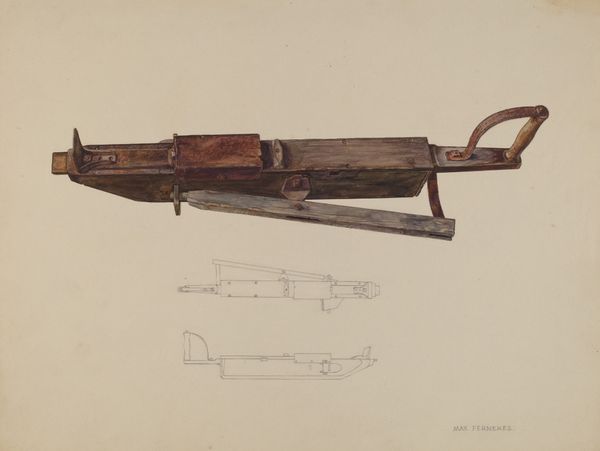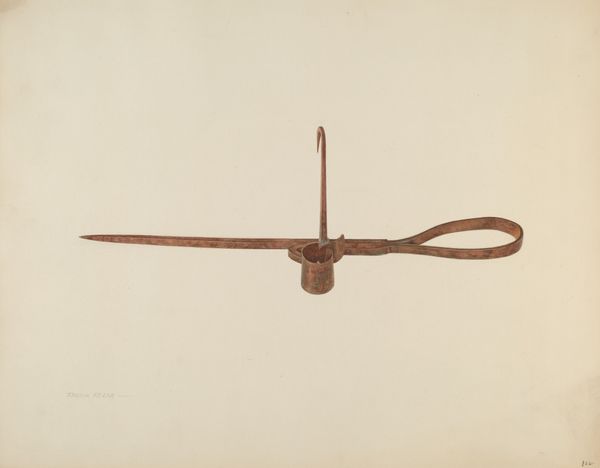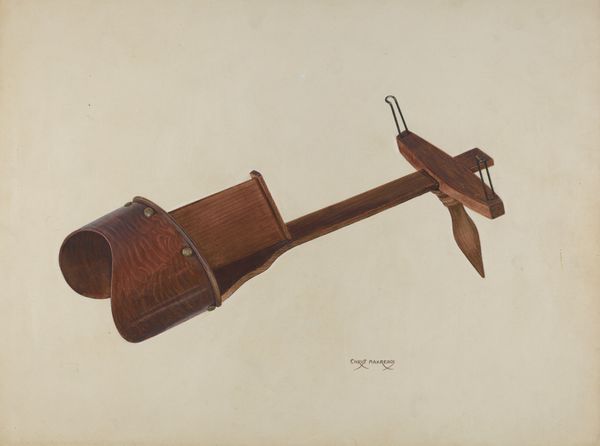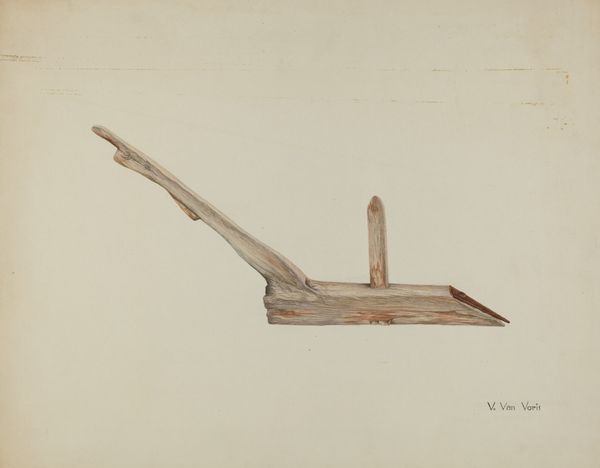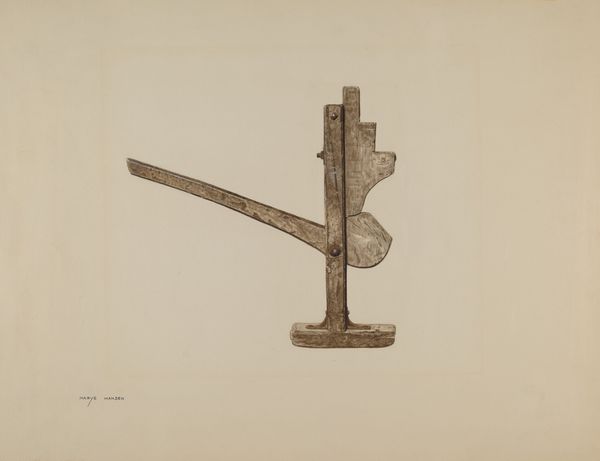
drawing
#
drawing
#
toned paper
#
acrylic
#
charcoal drawing
#
possibly oil pastel
#
oil painting
#
acrylic on canvas
#
underpainting
#
painting painterly
#
watercolour illustration
#
watercolor
Dimensions: overall: 34.8 x 49.7 cm (13 11/16 x 19 9/16 in.)
Copyright: National Gallery of Art: CC0 1.0
Curator: The artwork before us is called "Tool Gauge," believed to be created around 1939. The artist is Chris Makrenos. It's a drawing, and it seems like a study in tones and textures. Editor: My first impression is one of simplicity and functionality. The muted palette creates a sense of aged authenticity, doesn't it? The sharp lines juxtaposed against the smooth wooden curves evoke a sense of precision, even permanence, that makes one contemplate craftsmanship. Curator: Absolutely. Considering its purpose as a woodworking instrument, its clear design emphasizes practical application. What I find most compelling is how Makrenos has chosen to depict this object – the clear utility is central to appreciating its form. Think of the labor inherent in both the tool’s creation and its function, how that reflects the social value of physical work at that moment. Editor: Yes, it speaks volumes about a dedication to craft. I see in this image not just the object itself, but the shadow of the hand that wields it. The tool implies precision, yes, but it also evokes thoughts of growth and cultivation. Isn't there a potent link there, perhaps subconscious, between tool and nature, between construction and generation? That metallic blade could symbolize incision or harvest. Curator: Interesting, to think about it on that level, particularly in 1939, a period of enormous production, of wartime manufacturing. Seeing how essential such precise instruments would have been… that adds a weighty element. But also look closely. The image’s clarity underscores an economy of material—a resourcefulness bred from necessity. The simple wood, the precisely calibrated metal—components of production, each telling its own story. Editor: And how striking, then, that Makrenos chooses to isolate the tool, presenting it without context. It gains an iconic status—a testament to human ingenuity and the power of simple, effective design. Curator: I agree. Ultimately, the drawing stands as a reflection of its era. It reminds us of the tangible relationship we once had with tools. Editor: For me, it is more about memory. About how tools can represent culture and tradition. I am thinking about this particular object and its future through images, always, how a design is kept in memory and passed on through different forms. It seems a symbol of precision as well as potential, ripe with both historical weight and a simple elegance.
Comments
No comments
Be the first to comment and join the conversation on the ultimate creative platform.
